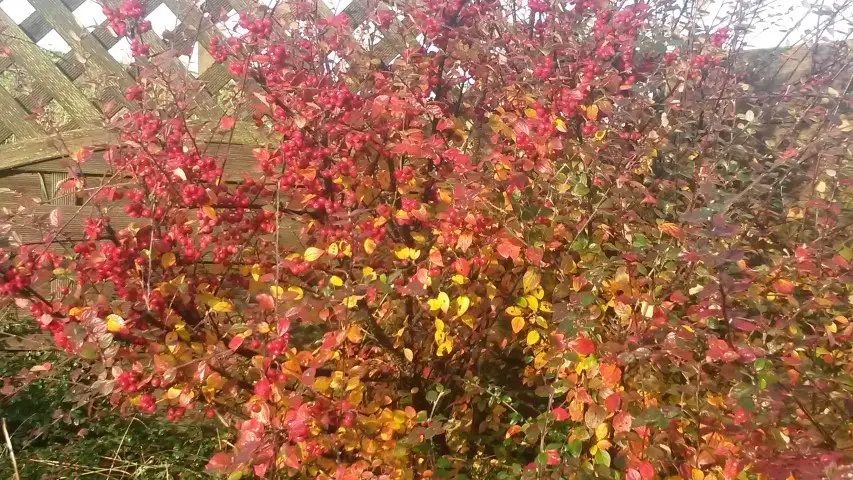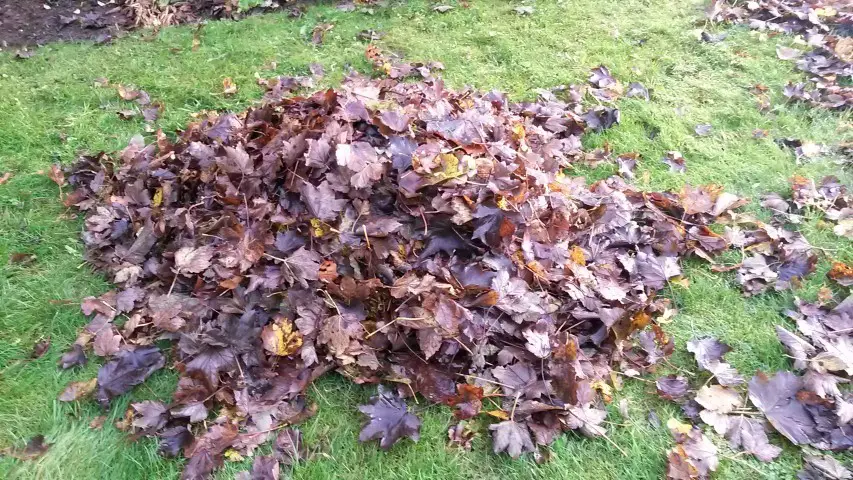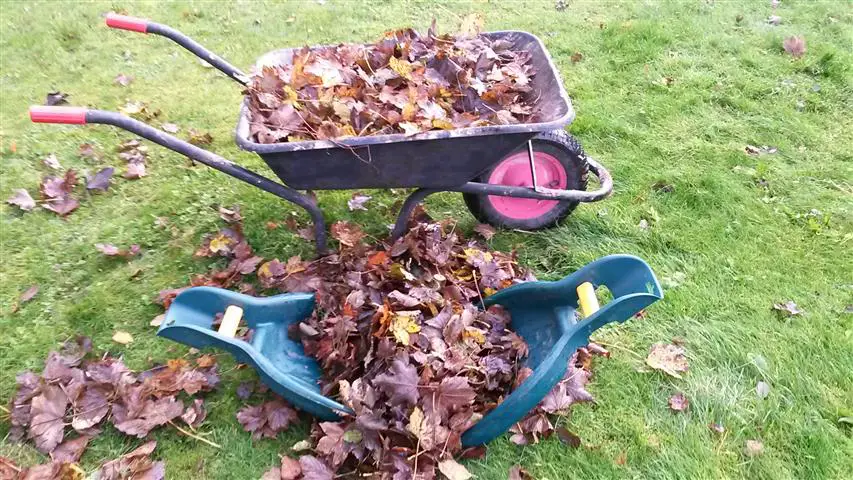The Autumn fall season is not only marked by the beautiful colors, but also by the masses of fallen leaves that can become a hazard on the road as well as an inconvenience in the garden – unless you follow these great ideas for dealing with fallen leaves!

In fact, I have found that fallen leaves can become a gardener’s best friend offering free plant food, soil amendment material, weed protection, and frost cover to name just some of the benefits that fallen leaves have to offer.
Interested to know more?
Here are some ways that I use fallen leaves that may help you to turn an inconvenience into a ‘windfall’ (pun intended).
6 Ways to use fallen leaves
- Soil amendment: After gathering up the leaves, I put them into black polythene garbage bags tied at the top, and let them rot down for 1 or 2 years. I can then turn the composted leaves into the soil to add friability and drainage that will encourage microbial life and plant growth.
- Composting: Similar to above, but make sure the leaves are well chopped up (check details below on harvesting leaves). I can add the chopped leaves into the compost as a ‘brown’ material to add bulk and friability. This will help oxygenate the compost and encourage the composting process overall.
- Mulching leaves: In the Autumn fall I chop up the leaves and rake them around the base of plants and bushes. This will protect the plants roots against the winter frosts and ensure they have a good start in the coming Spring season. It is a good idea to make a wire-mesh cage around delicate perennials and fill it with leaves to insulate the plant against frost over winter.
- Make leaf mould: Another form of composting, leaf mould takes about 2 years to make if you pile up the leaves into a heap and leave them to rot down. I find that this makes excellent material for soil amendment or adding to compost as ‘brown’ material. Leaf mould
 holds masses of water and stimulates microbial activity.
holds masses of water and stimulates microbial activity. - Add to the lawn: I prefer to chop up the fallen leaves with a mulching lawnmower on a regular basis. This means that the tiny leaf fragments will just sink into the lawn. These tiny fragments will break down over winter and be pulled into the soil by worm activity.
- Start a lasagna garden: Leave the leaves in a grass or weedy area about 4-6 inches thick over winter. Come the Spring the material under the leaves will have started to rot away and by adding more green & brown material on top, I can start a lasagna type vegetable garden.
Best way to collect fallen leaves
Traditionally raking up the leaves is a part of the many Autumn gardening tasks – but there is an easier and more effective way to do this rather than using a garden rake.
Make sure you have a mulching blade on your lawnmower, then simply run over the leaves 2 or 3 times before attaching the grass bag to the machine. Run over the decimated leaves again gathering them in the bag ready to unload onto the compost or mulch or whatever.
The fact is that the leaves will compost or break down much quicker if you first of all chop them up in this way.
Leaves will take a good 2-3 years to completely break down if you just add them complete to the compost heap. By using a lawnmower with a mulching blade this process can be reduced to 6 months, so it is worth doing if you plan using the compost the following year.
Should leaves be left on the lawn over winter?
Definitely not! At least not in the ‘raw’ form. From personal experience I find that a big pile of fallen leaves left on the grass over winter – or even for a few weeks – will result in the lawn rotting away and having to be re-seeded in the Spring.
So unless you want to start a Lasagna garden as suggested above, you definitely want to rake up and dispose of the leaves.
Alternatively follow the guidance above for mulching into the lawn with a mulching blade (best to do when leaves are dry).
Fallen leaves – The gardeners friend
Hopefully these ideas will open up some possibilities regarding what to do with the Autumn fall around the garden – especially if you are a vegetable gardener like myself and always in need of a cheap supply of composting materials!
Rather than a nuisance, the Autumn fall represents a free bounty for the veggie gardener and indeed for the environmentally aware gardener – after all, collecting the leaves for use in the garden is a better option than just throwing them into the landfill.
Indeed by collecting the fallen leaves and using them in the garden, you are preventing them blowing around blocking drains and causing a slippery road hazard when they are wet.
While it’s true that collecting fallen leaves does represent a few hours work, usually when you can least be bothered, the sight of leaves blowing around the garden should represent a great opportunity to get something for free!
We all like free stuff right? Certainly I do, and so I enjoy the savings I can make by not buying compost from the store or garden center 🙂


